Archaeologist Dr. Wakankar was on a train journey from Bhopal to Itarsi when he noticed the scenery rolling by outside. The hills that the train was passing by reminded him of ancient archaeological sites in France and Spain. Intrigued, he got down at the next station and walked back to the hills. Recalling the incident, Dr. Wakankar says that the very first cave he entered had paintings in it. The year was 1957 and Dr. Wakankar, fondly called the ‘Pitamaha’ of rock art in India, had just discovered Bhimbetka – the site of the oldest cave paintings in India.
Dr. Wakankar and his team would continue their work at Bhimbetka for many decades, identifying many paintings and dating them. The paintings were made across many periods, with the earliest as old as 8,000-10,000 BCE. In fact, Bhimbetka has traces of human occupation from as early as 30,000 BCE.
Animal Art
The earliest human figures at Bhimbetka are shown as stick figures, very much like how children start drawing human shape. Over time we get to see more well formed images. These images show people involved in hunting, dancing and in processions. Musical instruments are shown and perform has headgear and masks. One interesting image is that of a rider with a face cover on a horse being welcomed back by his people who appear to be holding pom-poms! This picture is titled ‘Welcoming the hero’,.
Rock formation
As you enter the Bhimbetka cave complex, you come across the largest cave in the area. This is called the ‘Auditorium’ because of its sheer size and structure. Wind and water, though, has eroded many of the rocks. Unfortunately, many of the prehistoric paintings have also been destroyed by rain water. The Archaeological Survey of India is actively involved in protecting what is left of this UNESCO world heritage site.
Getting there
Bhimbetka is 50 kms away from Bhopal and easily reachable by road. ASI has good description of each of the caves. Keep in mind that it may take a little bit of patience to clearly identify all the art work, they are much smaller than what you may originally think. Do plan to spend a couple of hours at the site to soak in the magic of the place.

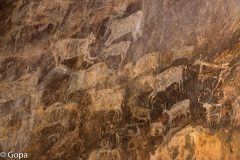
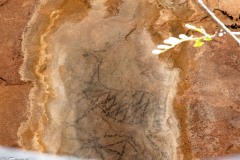
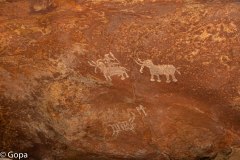

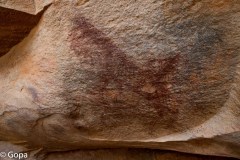
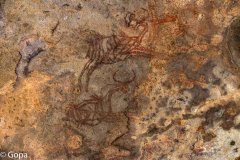
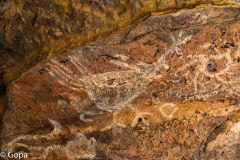
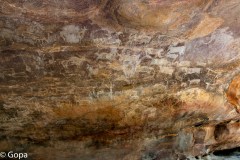
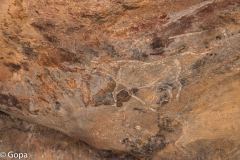
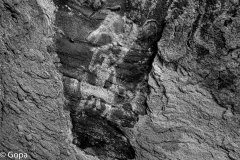
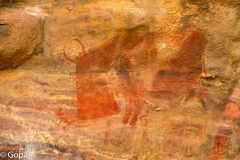
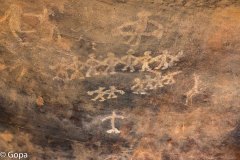
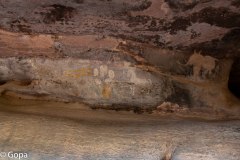
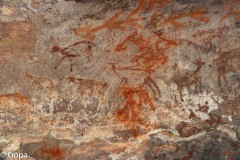

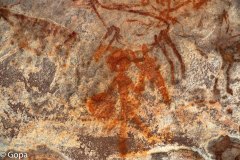
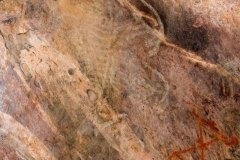
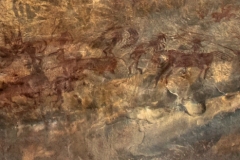
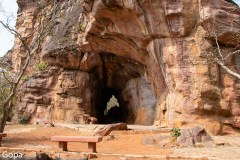
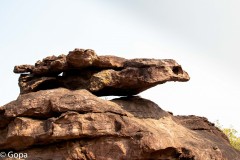
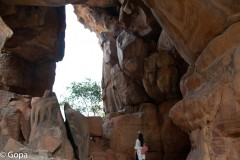



amazing that Dr. Wakankar was able to get down in the next station and go down to the caves… We have such a treasure now
Absolutely! Dr. Wakankar was truly a legendary figure, amongst his other research finding was that Saraswathi was not a mythical river but it actually existed. This discovery in turn destroyed the aryan invasion theory and the Indus Valley civilization is now more correctly known as Indus-Saraswathi civilization.